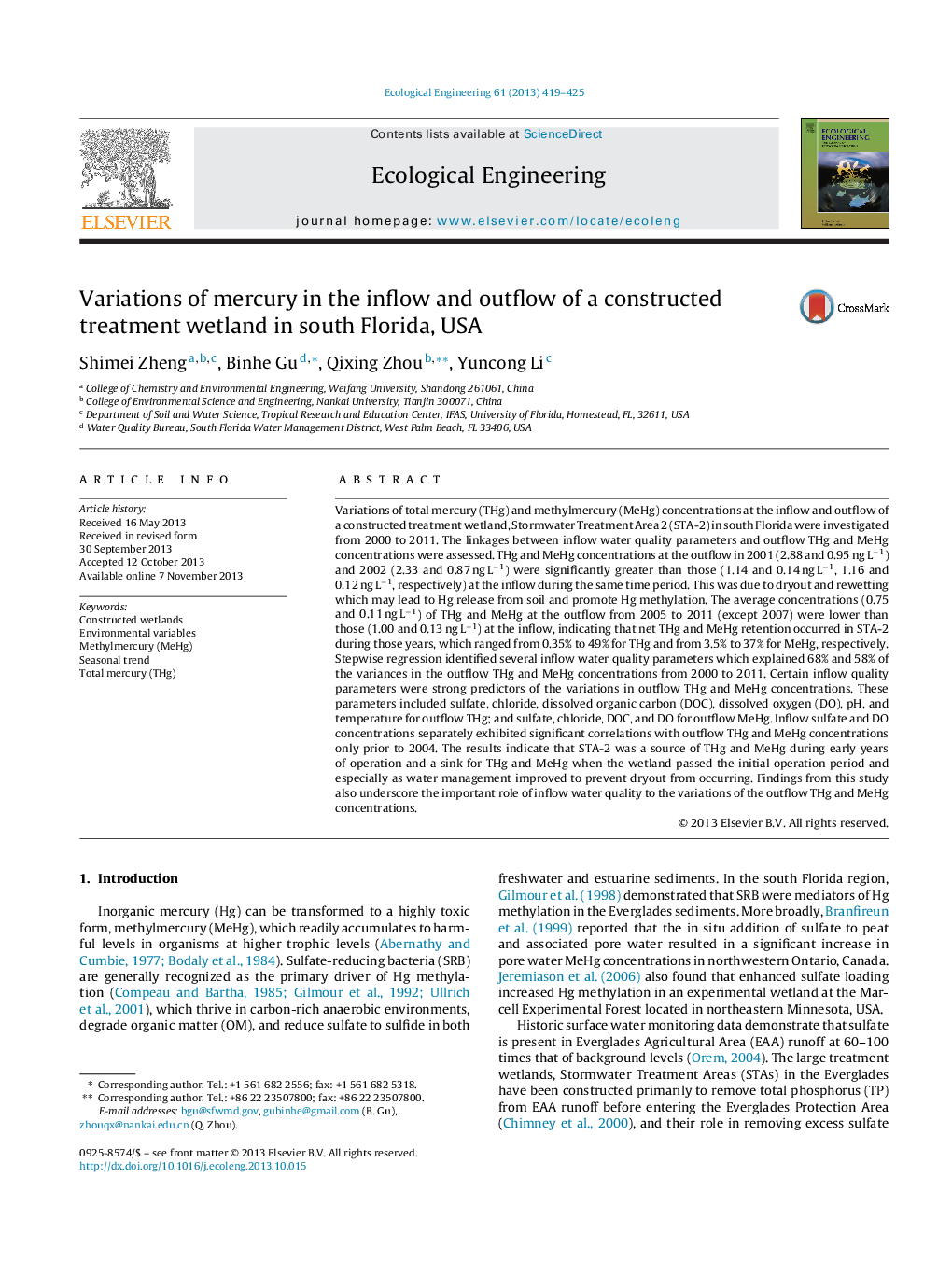| Article ID | Journal | Published Year | Pages | File Type |
|---|---|---|---|---|
| 4389505 | Ecological Engineering | 2013 | 7 Pages |
•We analyzed surface water mercury and water quality data from a constructed wetland.•Higher THg and MeHg levels at outflow than inflow were recorded for the initial years.•Net removal of THg and MeHg was recorded for the subsequent years.•Variations in outflow MeHg were largely explained by inflow sulfate, Cl, DOC and DO.
Variations of total mercury (THg) and methylmercury (MeHg) concentrations at the inflow and outflow of a constructed treatment wetland, Stormwater Treatment Area 2 (STA-2) in south Florida were investigated from 2000 to 2011. The linkages between inflow water quality parameters and outflow THg and MeHg concentrations were assessed. THg and MeHg concentrations at the outflow in 2001 (2.88 and 0.95 ng L−1) and 2002 (2.33 and 0.87 ng L−1) were significantly greater than those (1.14 and 0.14 ng L−1, 1.16 and 0.12 ng L−1, respectively) at the inflow during the same time period. This was due to dryout and rewetting which may lead to Hg release from soil and promote Hg methylation. The average concentrations (0.75 and 0.11 ng L−1) of THg and MeHg at the outflow from 2005 to 2011 (except 2007) were lower than those (1.00 and 0.13 ng L−1) at the inflow, indicating that net THg and MeHg retention occurred in STA-2 during those years, which ranged from 0.35% to 49% for THg and from 3.5% to 37% for MeHg, respectively. Stepwise regression identified several inflow water quality parameters which explained 68% and 58% of the variances in the outflow THg and MeHg concentrations from 2000 to 2011. Certain inflow quality parameters were strong predictors of the variations in outflow THg and MeHg concentrations. These parameters included sulfate, chloride, dissolved organic carbon (DOC), dissolved oxygen (DO), pH, and temperature for outflow THg; and sulfate, chloride, DOC, and DO for outflow MeHg. Inflow sulfate and DO concentrations separately exhibited significant correlations with outflow THg and MeHg concentrations only prior to 2004. The results indicate that STA-2 was a source of THg and MeHg during early years of operation and a sink for THg and MeHg when the wetland passed the initial operation period and especially as water management improved to prevent dryout from occurring. Findings from this study also underscore the important role of inflow water quality to the variations of the outflow THg and MeHg concentrations.
